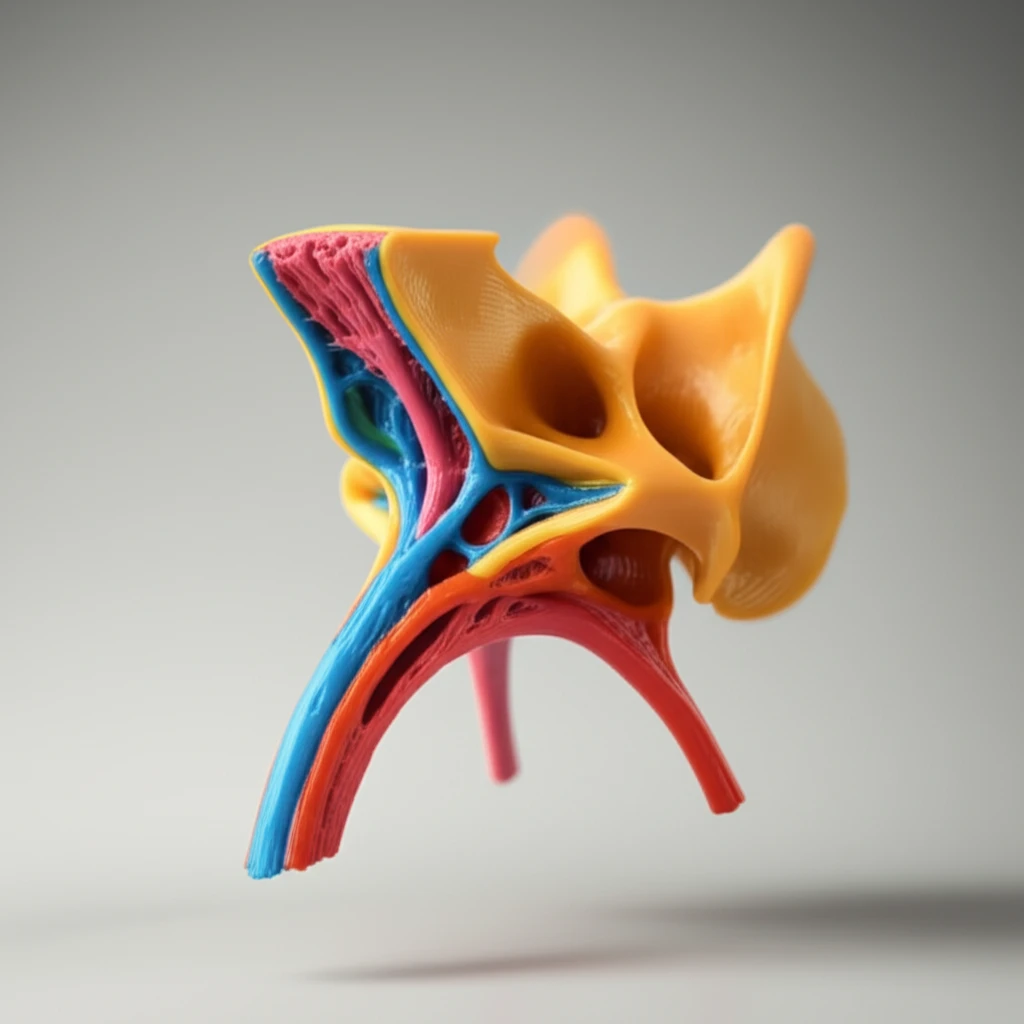
Beyond Textbooks: How 3D Printing Is Revolutionizing Anatomy Education
"From Complex Structures to Hands-On Learning: Discover How 3D Printing Models Are Transforming the Way We Study Anatomy."
Anatomy, the cornerstone of medical understanding, has traditionally relied on textbooks, illustrations, and cadaveric dissections. These methods, while essential, often present challenges in visualizing and understanding complex, three-dimensional structures. The intricate details of areas like the pterygopalatine fossa, a critical region in the skull, are difficult to grasp using conventional methods. However, a technological revolution is underway, transforming the way we learn and teach anatomy.
3D printing, also known as additive manufacturing, is emerging as a powerful tool in medical education. This technology allows for the creation of tangible models from digital data, offering a more accessible and immersive learning experience. Imagine being able to hold a perfect replica of the pterygopalatine fossa in your hands, exploring its intricate canals and relationships in a way that textbooks and diagrams simply can't replicate.
This article explores the innovative application of 3D printing in anatomy education, specifically focusing on the creation of a 3D-printed model of the pterygopalatine fossa. We'll delve into the process, benefits, and potential of this groundbreaking approach, highlighting how it's changing the landscape of anatomical learning for students and professionals alike.
Unveiling the Pterygopalatine Fossa: The Challenge of Traditional Anatomy Study

The pterygopalatine fossa (PPF) is a small but crucial space located in the skull base. It's a complex region housing important nerves and blood vessels. Understanding the PPF is essential for medical professionals, including surgeons, radiologists, and dentists. Its intricate structure, with its canals, foramina, and surrounding structures, has always been a challenge to grasp.
- Limited Visualization: Textbooks and diagrams offer a simplified 2D representation.
- Accessibility: Cadaveric dissections are not always readily available.
- Complexity: The intricate structure of the PPF is challenging to understand.
The Future of Anatomy Education: 3D Printing and Beyond
3D printing is poised to play an even more significant role in anatomy education. As technology advances and costs decrease, the use of 3D-printed models will likely become even more widespread. The ability to create personalized models, incorporate haptic feedback, and integrate with augmented reality will further enhance the learning experience. By embracing these innovative tools, we can create a new generation of medical professionals with a deeper understanding of the human body and the ability to provide better patient care.
